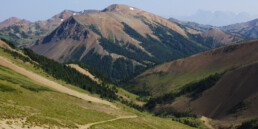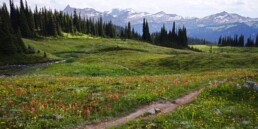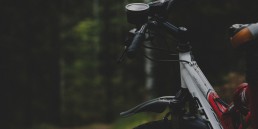Marketing Mountain Biking Trails
By Chris Hughes
Killer mountain bike trails don’t just satisfy local riders. They can also attract tourists from all over, revitalize local economies, and put a destination on the map. Just look at places like Moab, Fruita, Vancouver’s North Shore, Glentress, Coed Y Brenin – before they developed mountain biking trails, not many of us had heard of them. Now, people fly from all over the world for the express purpose of riding in these mountain bike meccas, and the economic benefits have convinced other locations to get in the game.
Whether you’re a land manager, trailbuilder, government official, bike-shop owner, or an enthusiastic member of a mountain bike club, there are several things you can do to make your community more appealing to mountain bikers:
- Build Great Trails
Forget about marketing: If you do not have a great product, you have nothing to sell. Recruit the best trail experts available, invest adequate resources, provide a mix of experiences, and do not be afraid to be different. Get your facility known for one specific thing – longest climbs, most difficult trails, amazing views, or even the best kid zone – and it will create priceless publicity: word of mouth. Don’t forget to tweak your trails to meet changing trends. - Provide Supporting Facilities
Clean washrooms and high quality onsite facilities can make or break a ride. It sounds like a no-brainer, but it’s surprising how many establishments forget this very important rule. Other facility improvements can include picnic tables, garbage cans, map holders, and a guest book to record all the great comments. - Install Effective Signs
Roadside signs can be your most cost-effective form of advertising. Signs typically cost a fraction of other forms of advertising per viewer; they build awareness 24/7; and they make it really easy for people to find your trails. Do not be afraid to highlight suggested routes, or the trailbuilder’s favorite feature or loop. In trail systems with frequent intersections, a way-marked route system can help riders link trails without frequent map checks. See chapter 9 in IMBA’s Managing Mountain Biking book for more sign tips. - Share the Local Knowledge
There’s nothing better than local knowledge, and tourists know that. Set up trail staff and respected local riders as mountain bike ambassadors, and encourage them to provide visitors with information and insider tips. Be sure they’re provided with a pocket full of trail maps and additional training if needed. - Team Up with Local Bike Shops
Tourists don’t want to work to find out where to ride, lodge, eat, and shop… they usually just ask at the local bike shop. Shops can train their staff to be hospitality experts, which makes for happy bikers and satisfied customers. Giving mountain bikers the lay of the land, telling them where to park, and posting pictures of the area trailheads in the shop reduces travel hassle and anxiety for first-time visitors. - Get Other Local Businesses Involved
Build community support for bicycle tourism by emphasizing the economic benefits. Cyclists spend money on gas, food, lodging, and gear, and businesses that are friendly to riders will reap the rewards. Help business leaders understand mountain biking by taking them on a tour of your trails and introducing customers. Promote each other’s services. - Create a Cool Website
Mountain biking is a niche market, and mountain bikers have different needs than mass-market travelers. Build a website that recognizes these differences with maps, updated trail conditions, weather, discussion boards or blogs, trip planning tips, and photos and videos – including user-submitted content. - Offer Free Trail Maps
Invest in a clear and simple map that doubles as a brochure. Coordinate the design with your website and signage. Elevation profiles and concise ride descriptions are helpful, as are estimates of ride difficulty, descriptions of ride features, and weather and safety considerations. Maps should include parking and facility information. - Tell Great Stories
Offer expense-paid mountain bike trips for the media – not only to editors at cycling magazines but also to editors at general magazines and journalists at daily newspapers. Work with your local tourism bureau to get media contacts and develop a creative “pitch” to make your story interesting. Keep in mind that everyone has trails – so be sure to highlight why yours are different. - Photograph your Trails Professionally
A picture really is worth a thousand words. Commission a photographer to capture your trails on film, and send slides or digital files to magazines, newspapers, and tourism bureaus. Riding hotspots such as Wales and Crested Butte, Colorado, have built stellar reputations as mountain bike destinations through photographs of happy riders on beautiful trails. IMBA’s website has a list of professional photographers for your reference. - Develop a Region-Wide Destination
Tourists seek locations that offer a superior collection of their favourite activities. Work with neighbouring towns to create a coordinated trail destination that gives visitors a week’s worth of riding options. - Track the Numbers
To help ensure continued community buy-in and investment in infrastructure improvements, it is essential to quantify your success. It will take several years of promoting and tracking to get an accurate reading on the positive impact of bike tourism on your community, but this information is essential in order to garner and maintain local support. Start by examining sales tax, lodging, and traffic counts.
Chris Hughes is the manager of tourism for Bruce County, Ontario, Canada.



